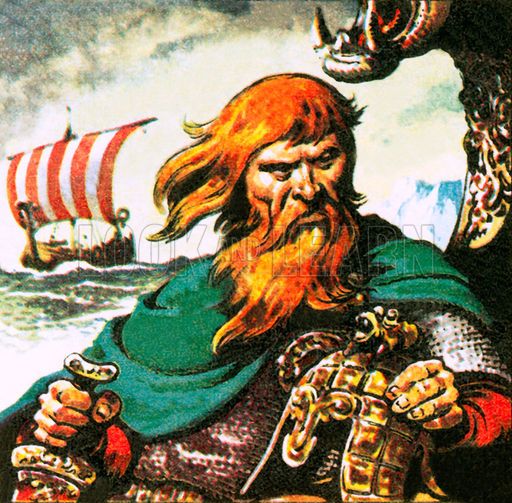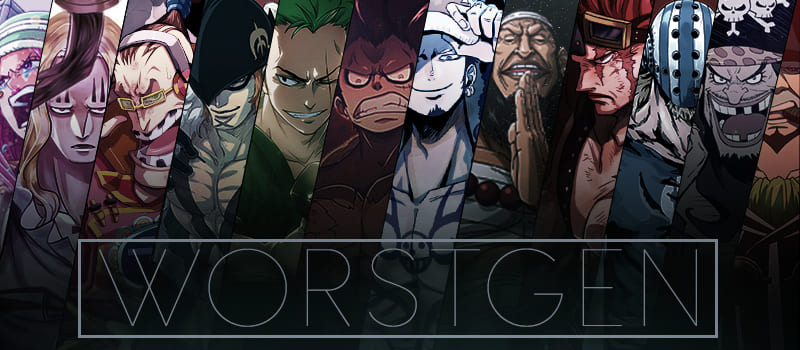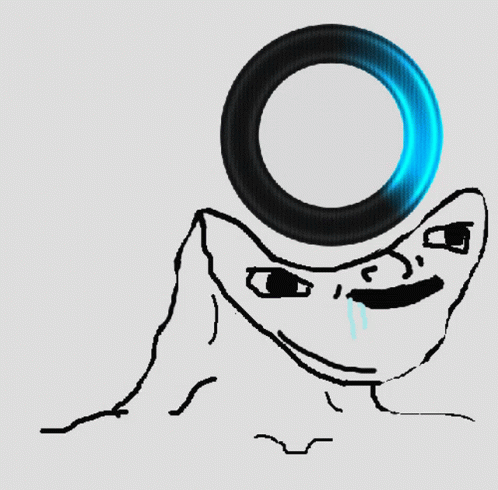Spoiler One Piece Chapter 1130 Spoilers Discussion
- Thread starter Absalom
- Start date
- Tags rambles a coward and in shambles rambles back in shambles
- Status
- Not open for further replies.
More options
Who Replied?
You should prolly get help, regardless of what you believe


Post automatically merged:
It's over bro, Goofy completely self-destroyed the yonko agenda after his abysmal Egghead performance against a depressed Kizaru and him running away from a big boar
It's over bro, Goofy completely self-destroyed the yonko agenda after his abysmal Egghead performance against a depressed Kizaru and him running away from a big boar
The Warcury stuff was weird, but it didn't really matter to me. You win some you lose some.
dorry and brogy are definitely powerful but people need to understand that their bounties has more to do with the egghead incident and their past and present connections rather than just power
how many people are on good terms with 2 yonko??
how many people are on good terms with 2 yonko??
2.Uta
3.Makino
4.Woop Slap
5.Marco
6.Kouzuki Momonosuke
7.Jinbe
8.Mihawk
9.Masked Deuce
10.Lola
The fact that Shanks achieved what meme had dreamt of for so long...
He has close ties to elbaf. If he wanted to, he could fuck the world up
He has close ties to elbaf. If he wanted to, he could fuck the world up

Plus the whole Red theme parallels with Erik the Red....
https://www.reddit.com/r/OnePiece/comments/i0e7ua/_/fzovqzc
https://www.reddit.com/r/OnePiece/comments/i0e7ua/_/fzp6sgf

https://www.opfanpage.com/elbaf-is-under-the-protection-of-akagami-shanks/
https://xcancel.com/Pangea_Castle/status/1835349954421731551
The Ship of the Giant Warrior Pirates is named "Great Eirik", named after Viking Explorer "Erik The Red" linked with Red-Hair Shanks...
Erik rejected Christianity until his Death.
"IC XC NIKA" translates to "Jesus Christ conquers"!
How will Shanks confront Luffy?
https://www.oxfordreference.com/display/10.1093/oi/authority.20110803095956323






Erik the Red and Red Haired Shanks:
Shanks, the enigmatic Emperor of the Sea, is a figure shrouded in mystery and power. With the recent revelations of his Figarland lineage, his story takes on new layers of complexity, echoing the saga of the Norse explorer Erik the Red in fascinating ways. These parallels weave a rich tapestry of shared traits, thematic resonance, and historical echoes that deepen our understanding of Shanks and his potential role in the One Piece world.
A Lineage of Rebellion:
The parallels between Shanks and Erik the Red, far from being diminished by the Figarland revelations, are actually amplified. They highlight a shared lineage of rebellion, leadership, and the enduring human desire for freedom and self-determination. Shanks's story, interwoven with echoes of Erik the Red's saga, becomes a powerful narrative about challenging fate, defying expectations, and striving for a world where everyone can choose their own destiny. It's a testament to Oda's masterful storytelling, weaving together historical inspiration, complex characters, and a grand narrative that continues to captivate and surprise. Shanks, like Erik, stands as a symbol of the enduring human spirit, driven by a desire for freedom, adventure, and the pursuit of a world where everyone can choose their own destiny.
A Lineage of Rebellion:
- Erik the Outlaw: Erik the Red was a man of fiery temper and defiant spirit. His clashes with authority led to exile from Norway and Iceland, forcing him to forge his own path. This rebellious streak, a rejection of societal constraints, finds a powerful echo in Shanks.
- Shanks the Defector: Born into the highest echelon of privilege as a Celestial Dragon, Shanks seemingly rejects the oppressive system he was born into. Choosing the life of a pirate, he challenges the World Government and the Celestial Dragons' authority, embracing a life of freedom and adventure. This act of defiance, of choosing one's own destiny over a predetermined path, resonates strongly with Erik's own rejection of societal norms.
- Erik the Chieftain: Exiled and ostracized, Erik didn't simply fade away. He discovered Greenland, established a settlement, and became a leader for those seeking a different life. This resonates with Shanks's role as captain of his own crew, a band of individuals bound by loyalty and a shared desire for freedom.
- Shanks the Emperor: Shanks's influence extends beyond his crew. He commands respect from pirates, negotiates with world leaders, and even holds sway with the Gorosei. This ability to lead, influence, and inspire others echoes Erik's ability to rally people to his cause and establish a thriving community in a harsh new world.
- Erik's Bloodshed: Erik's past wasn't just about exploration; it was marked by violence and conflict. His fiery temper led to killings and feuds, ultimately contributing to his exile. This darker aspect of his character adds a compelling dimension to the comparison with Shanks.
- Shanks's Hidden Depths: While Shanks often appears jovial and easygoing, hints of a darker, more intense side occasionally emerge. His clash with Eustass Kid, where he effortlessly overpowers the formidable pirate, suggests a capacity for ruthless action when necessary. Furthermore, his brutal takedown of Bartolomeo and his crew, including the destruction of their ship even after seemingly letting them go, reveals a calculated ruthlessness. This echoes Erik's own willingness to use force to defend his honor and assert his dominance.
- Seeking Redemption: Despite his violent past, Erik ultimately sought to build a new life in Greenland, offering a haven for others. This suggests a potential for change and redemption, a theme that could resonate with Shanks's story. Shanks actively seeks to prevent unnecessary conflict and bloodshed, intervening in wars and striving for a more peaceful world. Could this be his way of atoning for a potentially violent past, much like Erik sought to build a new life after his exile?
- A Family of Rebels? The revelation of Shanks's Figarland lineage adds another layer to the comparison. Was Erik's rebellious spirit perhaps a trait inherited by Shanks through a distant ancestral connection? Could the Figarland family have a history of defying authority, with Shanks being the latest in a long line of rebels? This opens up exciting possibilities about the family's history and their potential role in shaping the future of the One Piece world.
- Garling the Gorosei: The connection to Saint Figarland Garling, a Gorosei member, further complicates the narrative. Does Garling share Shanks's rebellious spirit, or does he represent the oppressive forces that Shanks seeks to challenge? This dynamic adds intrigue and raises questions about the Figarland family's internal struggles and their influence on the world stage.
- Erik and Leif, the Pioneers: Erik's legacy extended through his son Leif Erikson, who ventured even further, reaching Vinland. This passing of the torch, from father to son, explorer to explorer, is mirrored in Shanks's relationship with Luffy. By entrusting Luffy with his straw hat, Shanks inspires him to embark on his own journey, to challenge the world and seek his own destiny.
- Shanks and Luffy, the Torchbearers: Luffy, like Leif, embodies the next generation of explorers and challengers. He carries Shanks's will and determination, pushing the boundaries of the known world and defying those who seek to control and oppress. Both pairs represent the enduring human spirit of exploration, freedom, and the pursuit of a better world.
- A Symbol of Defiance: The "Red-Haired" epithet, shared by Erik and Shanks, takes on a new meaning in light of Shanks's Figarland heritage. It symbolizes not just a physical trait but a rebellious spirit, a defiance of fate and a commitment to forging one's own path, regardless of societal constraints. It connects them through a shared lineage of those who dare to challenge the status quo.
The parallels between Shanks and Erik the Red, far from being diminished by the Figarland revelations, are actually amplified. They highlight a shared lineage of rebellion, leadership, and the enduring human desire for freedom and self-determination. Shanks's story, interwoven with echoes of Erik the Red's saga, becomes a powerful narrative about challenging fate, defying expectations, and striving for a world where everyone can choose their own destiny. It's a testament to Oda's masterful storytelling, weaving together historical inspiration, complex characters, and a grand narrative that continues to captivate and surprise. Shanks, like Erik, stands as a symbol of the enduring human spirit, driven by a desire for freedom, adventure, and the pursuit of a world where everyone can choose their own destiny.
Funny how I'm listening to this as I write this lol, it feels appropriate somehow especially with how the main woman in it "turns all red" at the end and faces "salvation" or "trial by fire" or something too!:
Christianity and other religious representations in One Piece, themes of faith, sacrifice and such:
Faith as a Guiding Light in a World of Darkness:
The presence of Christian symbolism and themes in One Piece, intertwined with other religious and philosophical influences, adds a unique dimension to its narrative. It enriches the story with layers of meaning, connecting it to historical struggles, philosophical concepts, and the enduring human search for freedom, justice, and redemption. By incorporating these elements, Oda creates a world that resonates with diverse audiences, inviting them to explore the complexities of faith, sacrifice, and the pursuit of a better world. The subtle yet persistent Christian influences in One Piece demonstrate the power of storytelling to transcend cultural and religious boundaries, offering a universal message of hope, resilience, and the pursuit of a brighter future.
- The Shadow of Oppression: The World Government in One Piece casts a long shadow, representing a corrupt and oppressive power structure that mirrors historical and contemporary struggles against tyranny and injustice. In this world, faith becomes a beacon of hope, a source of strength for those who resist oppression and strive for freedom.
- Belief as a Catalyst for Change: Whether it's Luffy's unwavering belief in his dream, Kuma's devotion to the ideals of the Revolutionary Army, or Bonney's potential inheritance of faith in the Sun God Nika, the characters in One Piece demonstrate the power of belief to inspire action and drive change. This echoes the role of faith in Christianity, providing strength and guidance in the face of adversity.
- Luffy, the Sun God and the Savior: Luffy embodies many Christ-like qualities. He is selfless, compassionate, and willing to endure immense suffering to protect his friends and achieve his dream of freedom for all. His awakening as the Sun God Nika, a figure associated with joy and liberation, further strengthens this connection. Like Christ, Luffy represents hope, sacrifice, and the ultimate triumph over oppression. His journey mirrors the hero's journey archetype, with trials, tribulations, and a final victory that promises to bring about a new era of peace and freedom.
- Kuma, the Silent Shepherd: Bartholomew Kuma, with his possession of a Bible and unwavering devotion to the Revolutionary Army, acts as a silent guardian, protecting those who fight for freedom and justice, even at the cost of his own free will. His selfless actions and mysterious past suggest a deeper spiritual connection to the ideals he protects. Like a shepherd guiding his flock, Kuma guides and protects the revolutionaries, ensuring their safety and the continuation of their fight for a better world.
- Zoro, the Stoic Sacrifice: Zoro, though often portrayed as a gruff and pragmatic swordsman, embodies a form of selfless sacrifice reminiscent of Buddhist ideals. His willingness to endure pain and suffering for his captain and crew, culminating in his near-death experience with Kuma, demonstrates a deep loyalty and commitment to the greater good. This act of selfless sacrifice, done without hesitation or expectation of reward, aligns with the Buddhist concept of detachment and the pursuit of enlightenment through selfless action.
- Joyboy/Nika, the Mythical Hope: The legendary figure of Joyboy, now revealed to be intrinsically linked to the Sun God Nika, shares thematic similarities with Jesus Christ. Both represent hope, freedom, and the promise of a better world. Joyboy's legacy, passed down through generations, inspires those who fight for liberation and justice, much like Christ's teachings continue to inspire hope and faith centuries later. The mythical nature of Joyboy adds a layer of spiritualism to the narrative, suggesting a belief in a higher power that guides and protects those who strive for good.
- The Cross and its Multifaceted Meanings: The cross, a central symbol in Christianity, appears throughout One Piece in various forms. It represents sacrifice, redemption, and the struggle against oppression, adding layers of meaning to the characters and events associated with it. Mihawk's crucifix-shaped sword and the Cross Guild's emblem are prominent examples of this symbolism, suggesting both the burden of power and the potential for both good and evil.
- Sacrifice as a Path to Redemption: The theme of sacrifice for the greater good, a core element of Christianity, resonates strongly in One Piece. Luffy's willingness to endure pain and suffering for his crew and his dream echoes Christ's sacrifice for humanity. Similarly, Kuma's selfless actions, Zoro's acceptance of Luffy's pain, and Shanks's willingness to protect Luffy and potentially orchestrate a larger plan for a better world demonstrate this theme. Sacrifice becomes a powerful act of love and commitment, driving characters to put the needs of others before their own.
- Hope in the Face of Oppression: The concept of hope and liberation from oppression, central to Christianity, is mirrored in the fight against the World Government's tyranny and the pursuit of freedom for all. Luffy's embodiment of Nika, the "Sun God" who brings smiles and liberation, further reinforces this theme, offering a vision of a world free from suffering and injustice. Hope becomes a driving force, sustaining characters through their struggles and inspiring them to fight for a brighter future.
- Inherited Will and the Continuation of Ideals: The theme of inherited will, prevalent throughout One Piece, aligns with the passing down of faith and values in Christianity. Kuma's potential passing of his faith in Nika to Bonney suggests that beliefs and ideals can be passed down through generations, inspiring individuals to carry on the fight for freedom and justice. This highlights the importance of legacy and the enduring impact of those who fight for a better world.
- Hidden Christians and the Price of Faith: The history of Christianity in Japan, marked by periods of both acceptance and persecution, adds another layer of depth to these themes. The "Hidden Christians" (Kakure Kirishitan), who practiced their faith in secret during times of suppression, mirror the struggles of characters in One Piece who fight for freedom and justice against oppressive forces. This historical connection highlights the resilience of faith and the enduring human desire for spiritual freedom.
- Blending of Beliefs: Just as Christianity in Japan blended with existing religious and cultural practices, the Christian symbolism in One Piece is interwoven with other mythological and philosophical influences, creating a unique and diverse spiritual landscape. This reflects the adaptability of faith and its ability to find expression in various cultural contexts.
The presence of Christian symbolism and themes in One Piece, intertwined with other religious and philosophical influences, adds a unique dimension to its narrative. It enriches the story with layers of meaning, connecting it to historical struggles, philosophical concepts, and the enduring human search for freedom, justice, and redemption. By incorporating these elements, Oda creates a world that resonates with diverse audiences, inviting them to explore the complexities of faith, sacrifice, and the pursuit of a better world. The subtle yet persistent Christian influences in One Piece demonstrate the power of storytelling to transcend cultural and religious boundaries, offering a universal message of hope, resilience, and the pursuit of a brighter future.

Last edited:
LMAO
https://www.reddit.com/r/Piratefolk/comments/1g54thf
It was around 1400 proposals and rejections IIRC?
OH GOD! Loki was already setup and ruined almost 2 decades ago! The foreshadowing! /s






https://www.reddit.com/r/Piratefolk/comments/1g54thf
Post automatically merged:
You know Loki's gonna be super fucked if even "would literally propose a talking tree" Lola rejected him.
OH GOD! Loki was already setup and ruined almost 2 decades ago! The foreshadowing! /s






The fact people are getting hyped by this awful author is shocking. It’s like no one read the last 3 arcs
- Status
- Not open for further replies.




